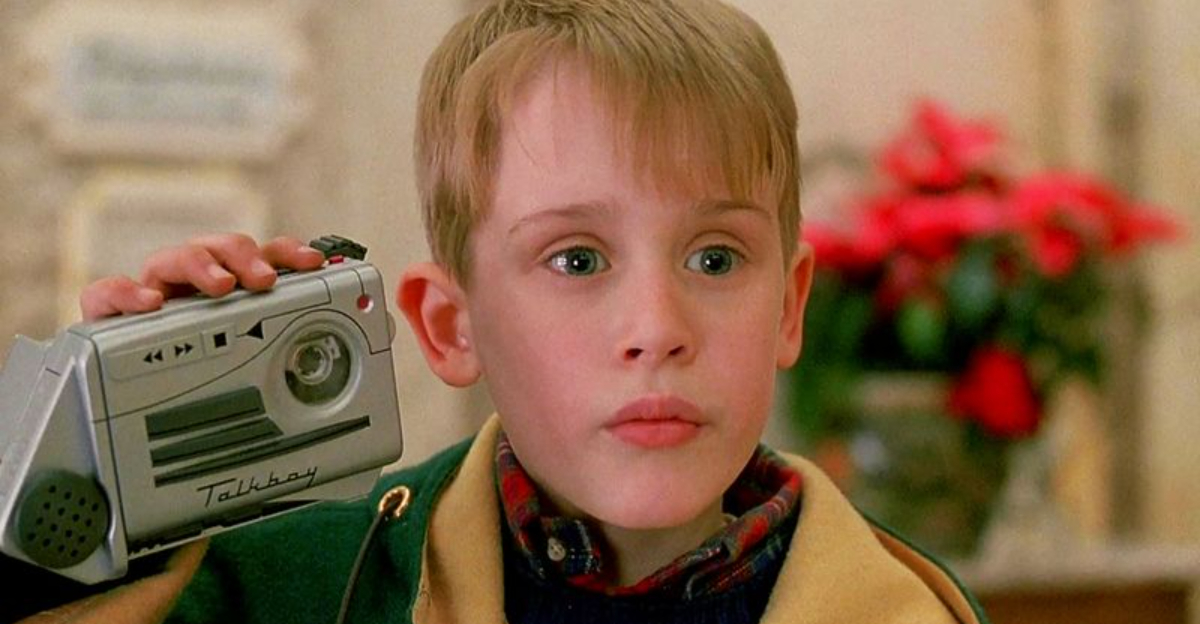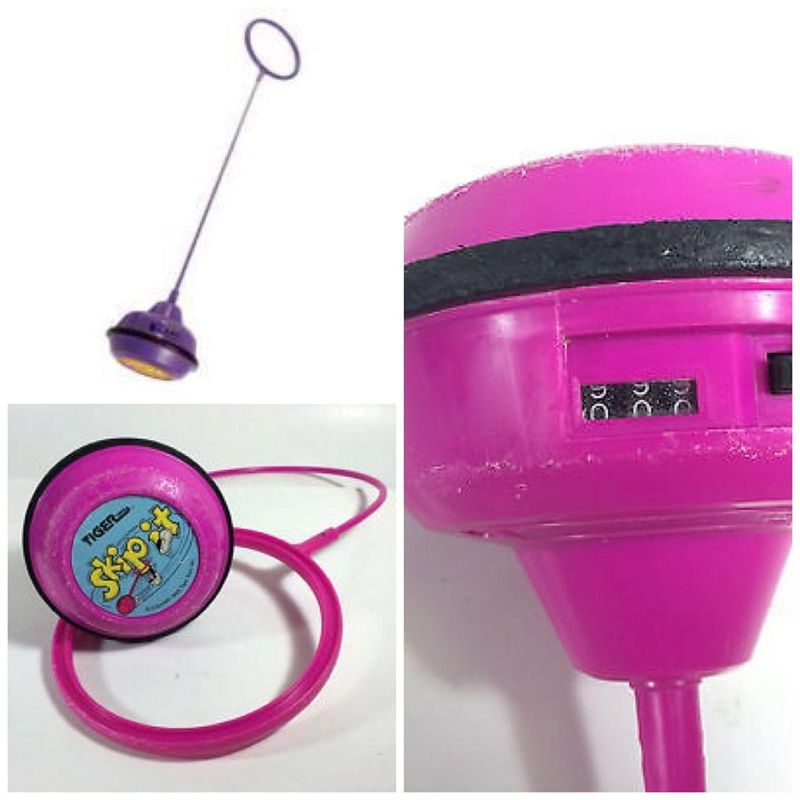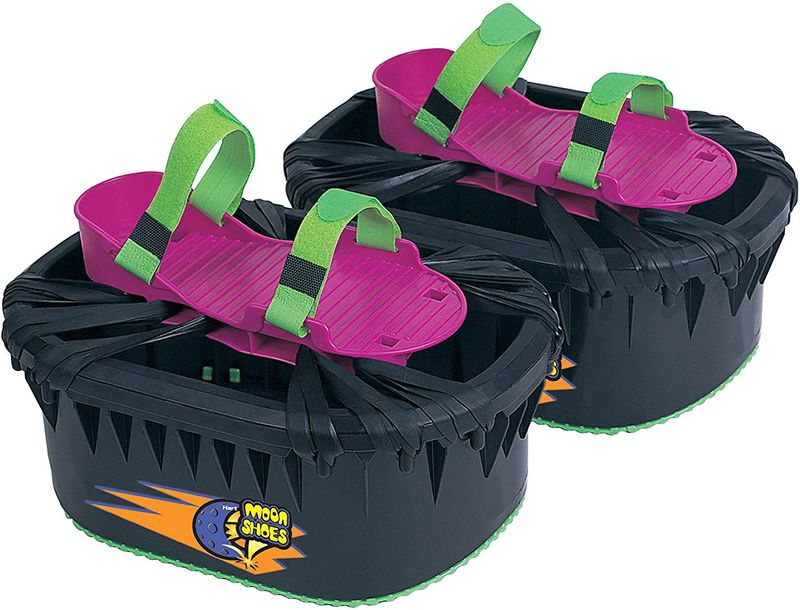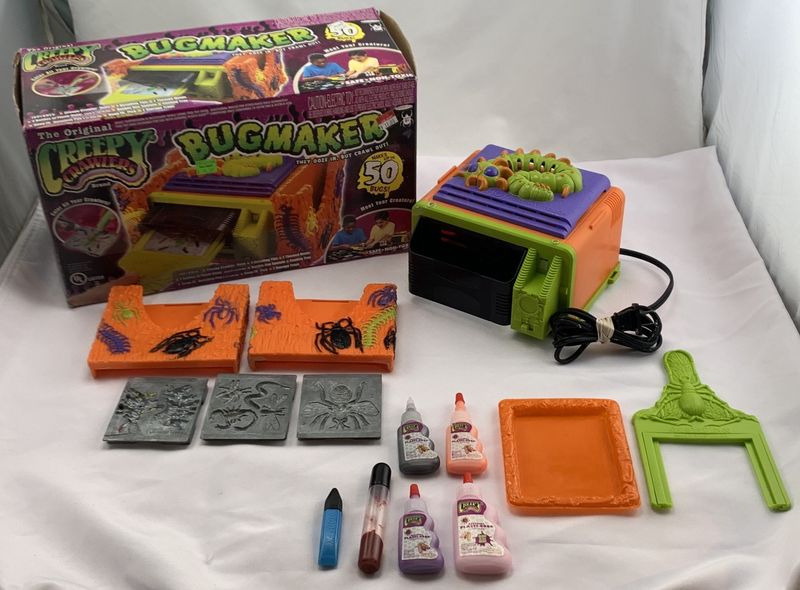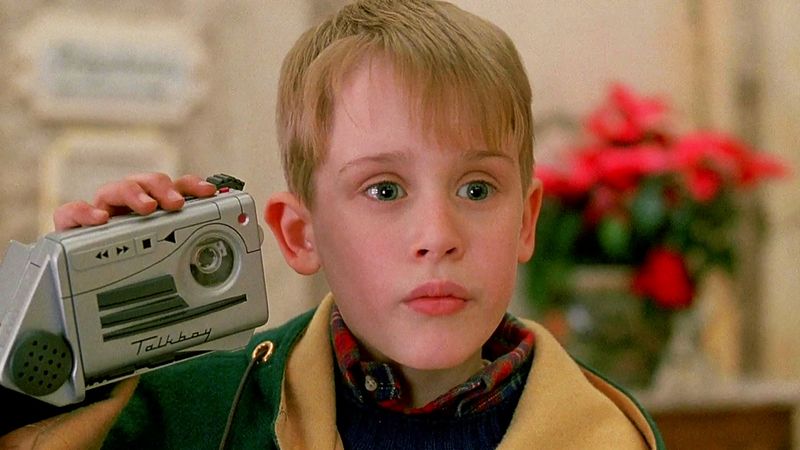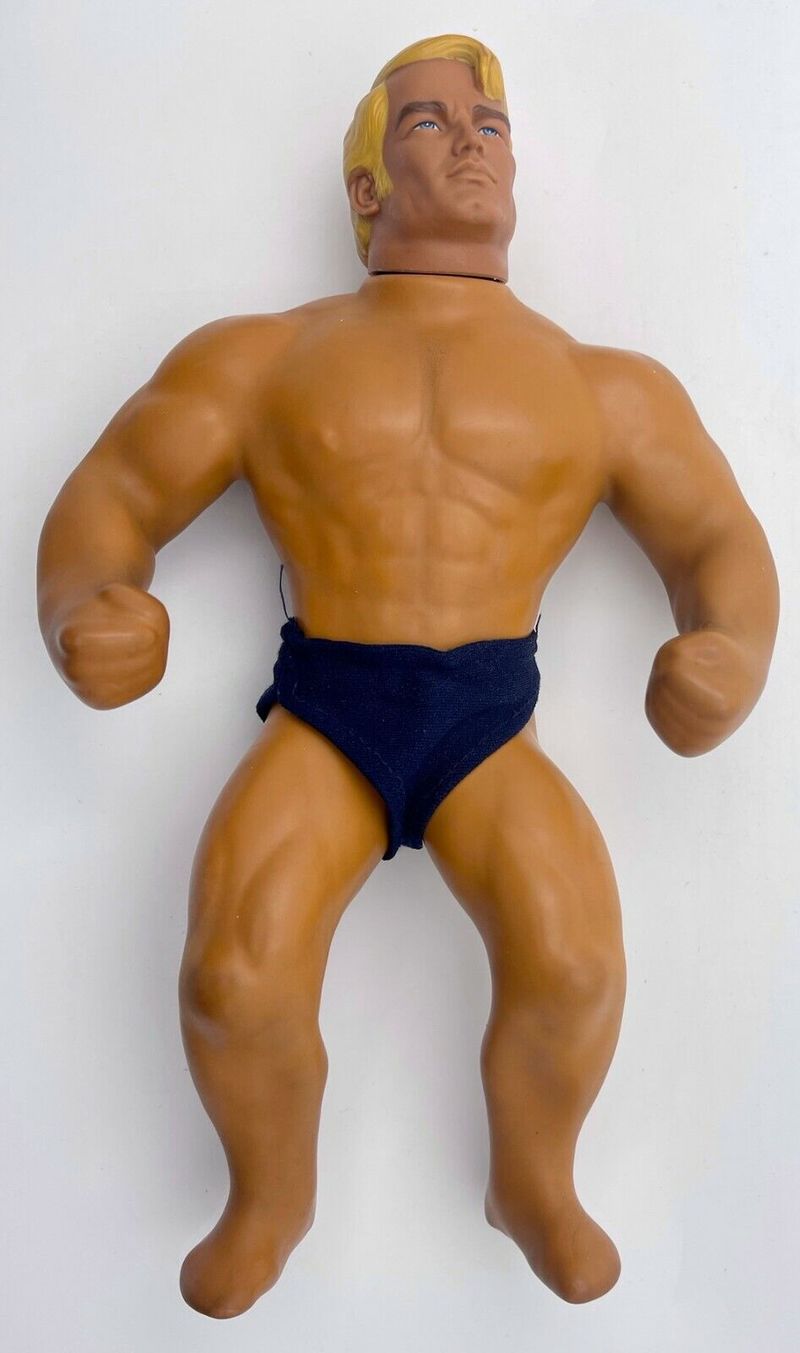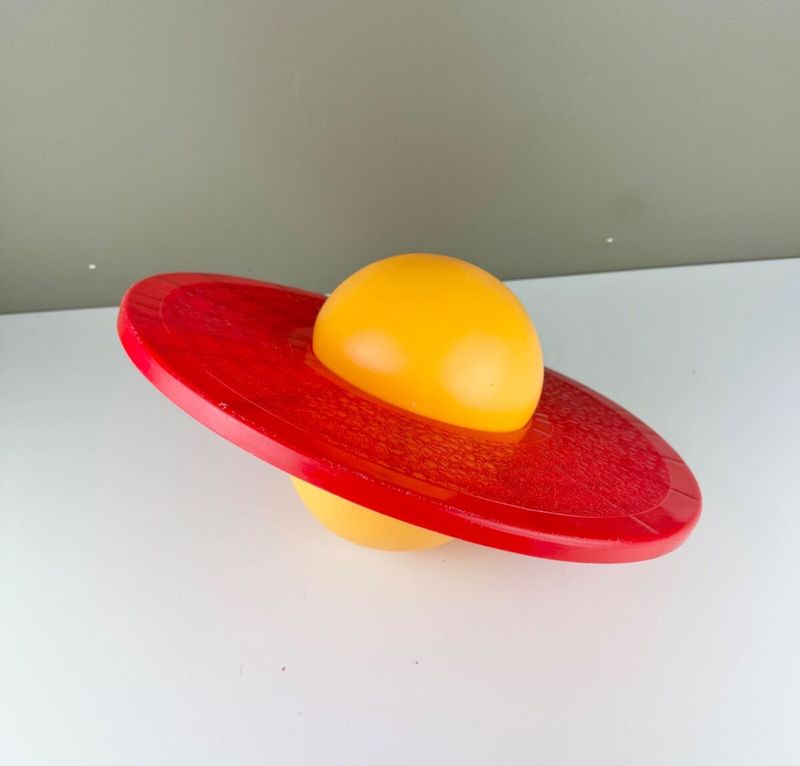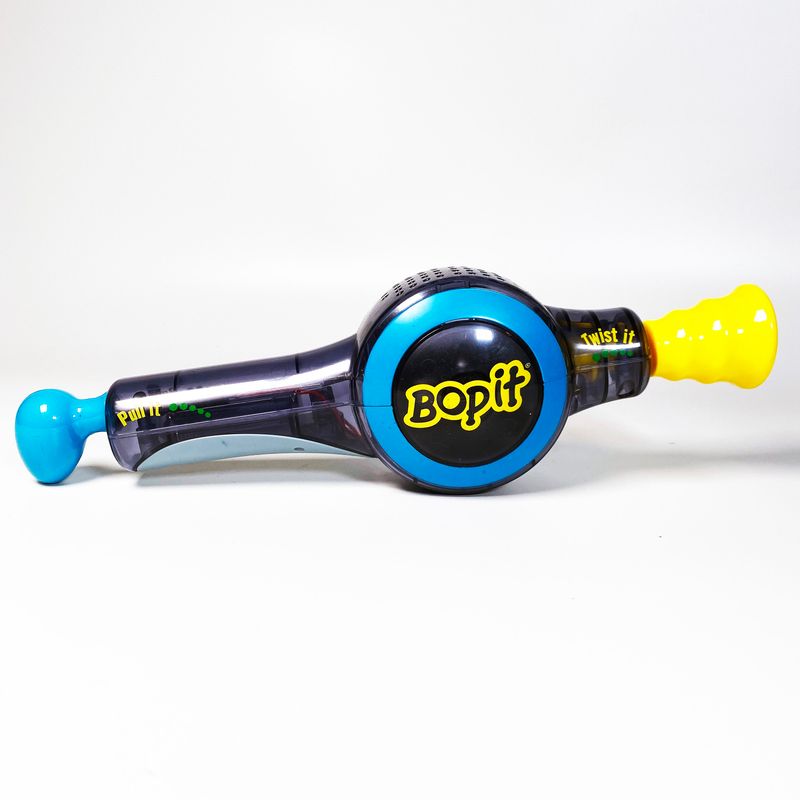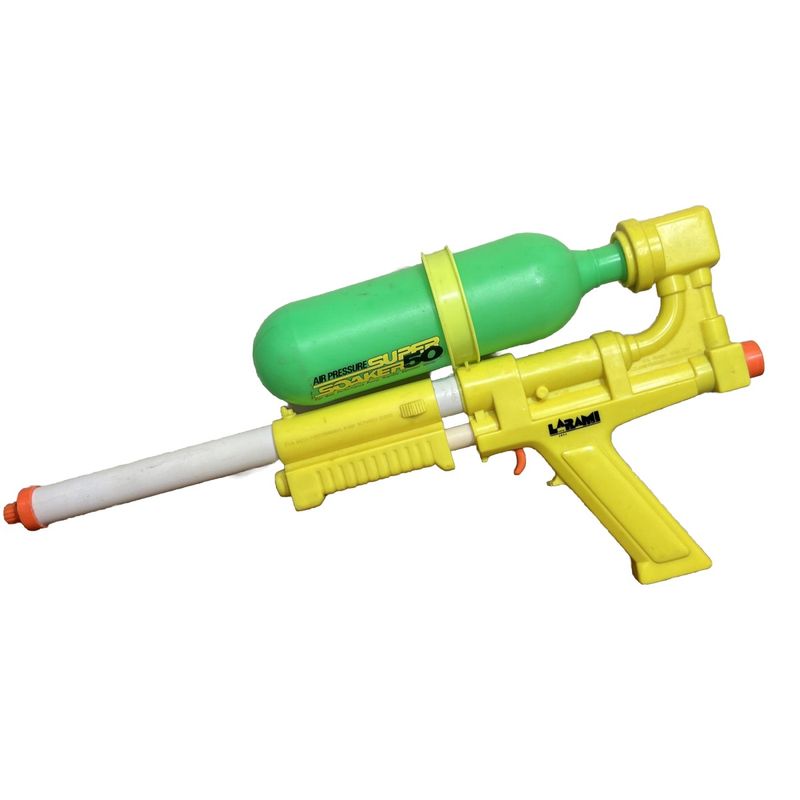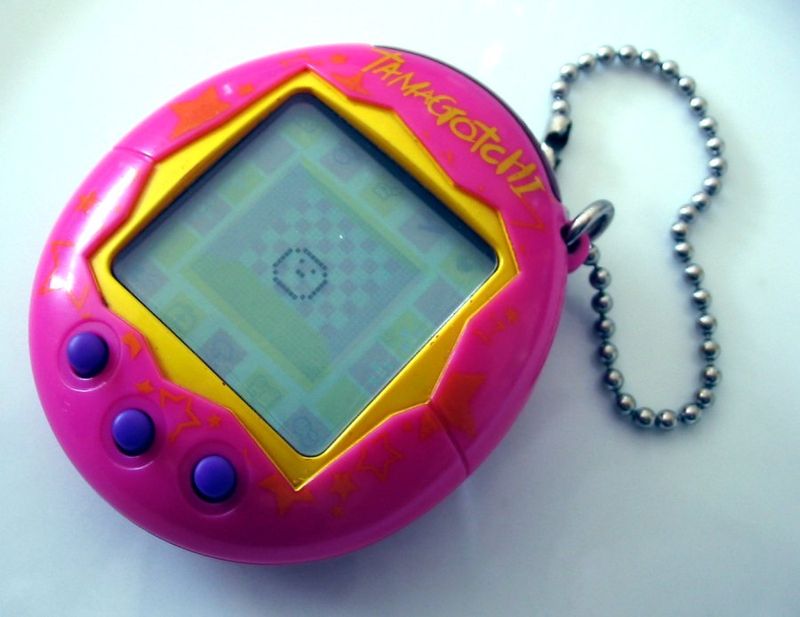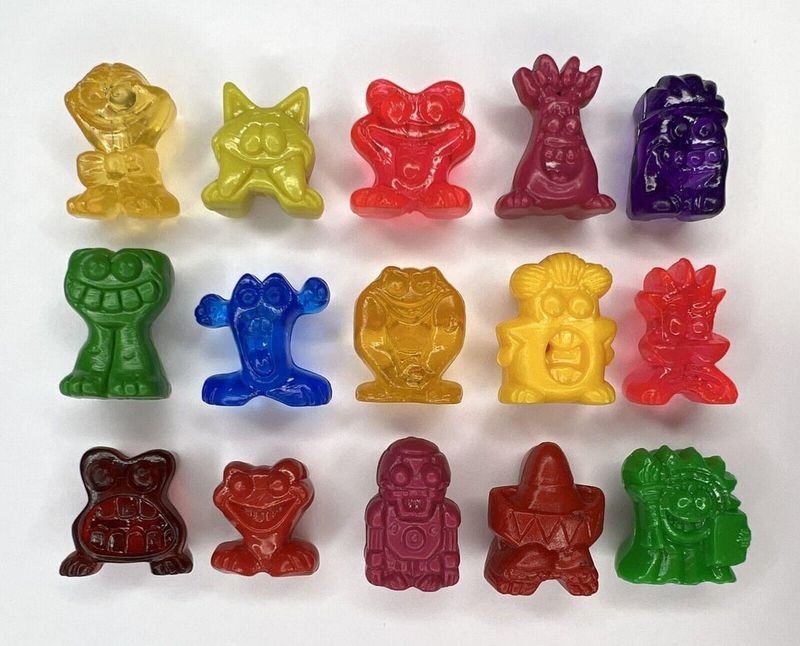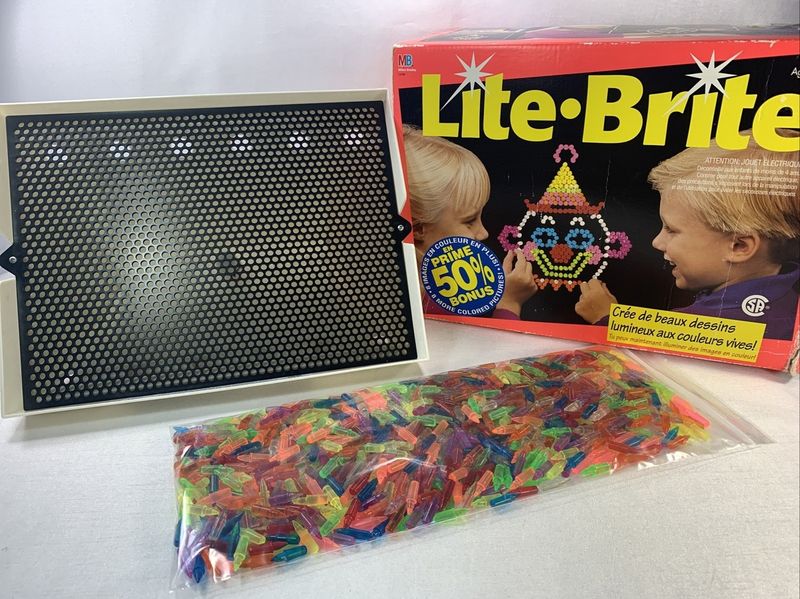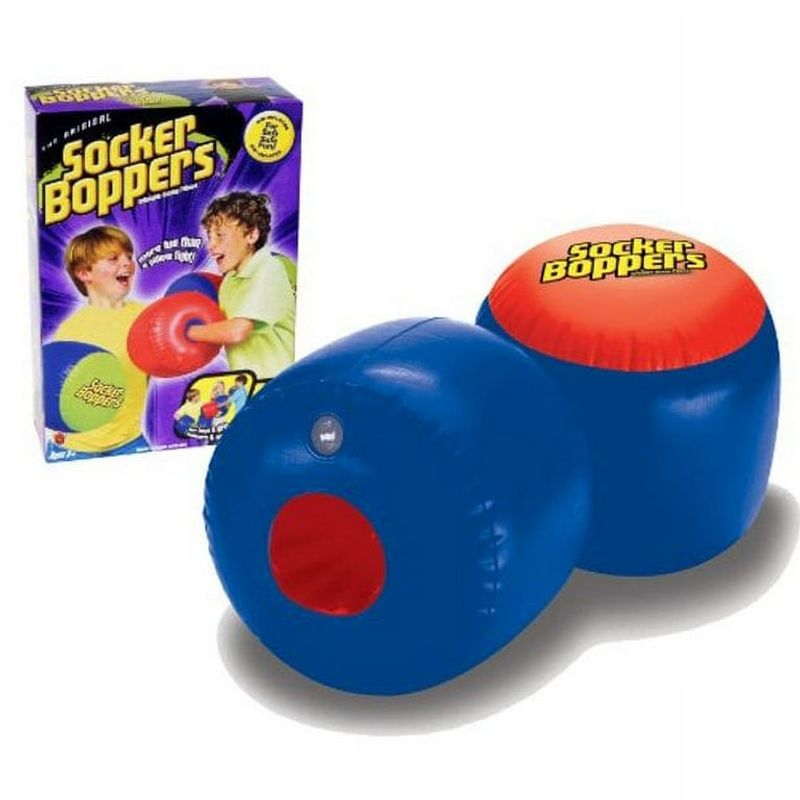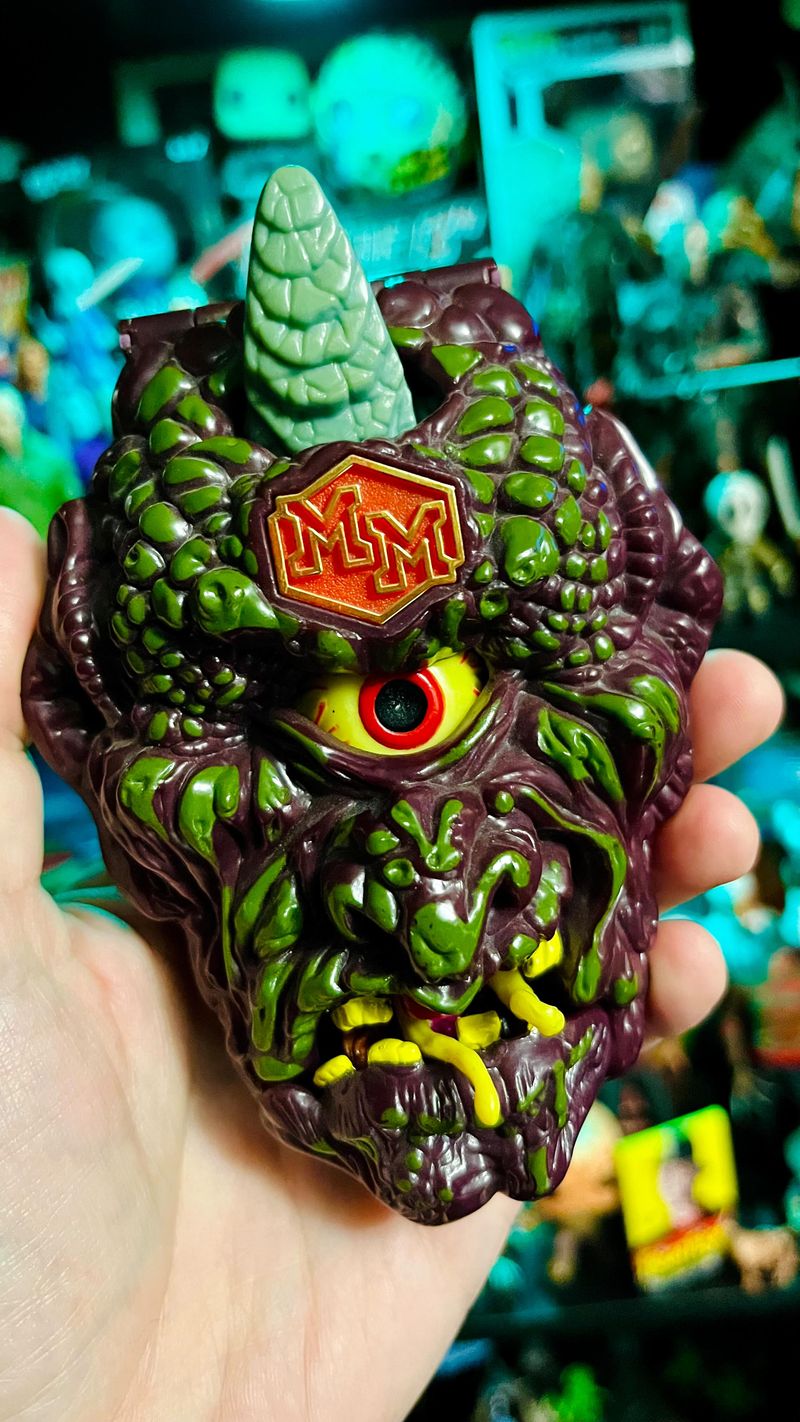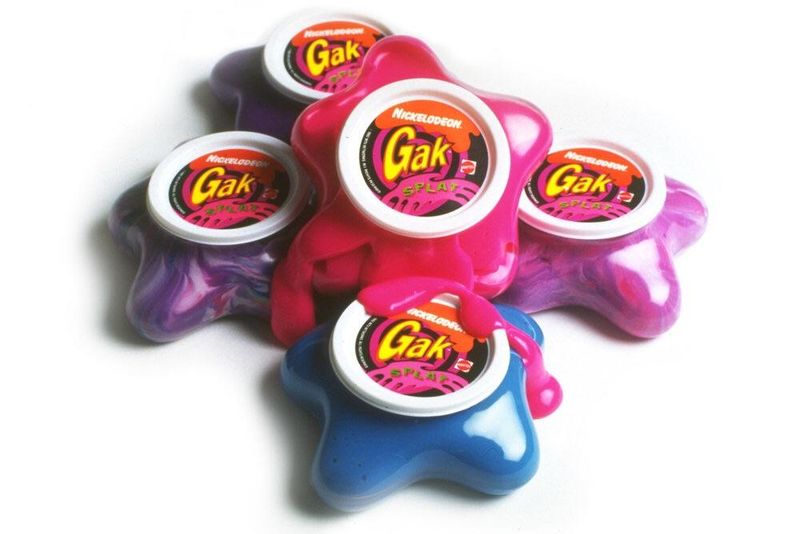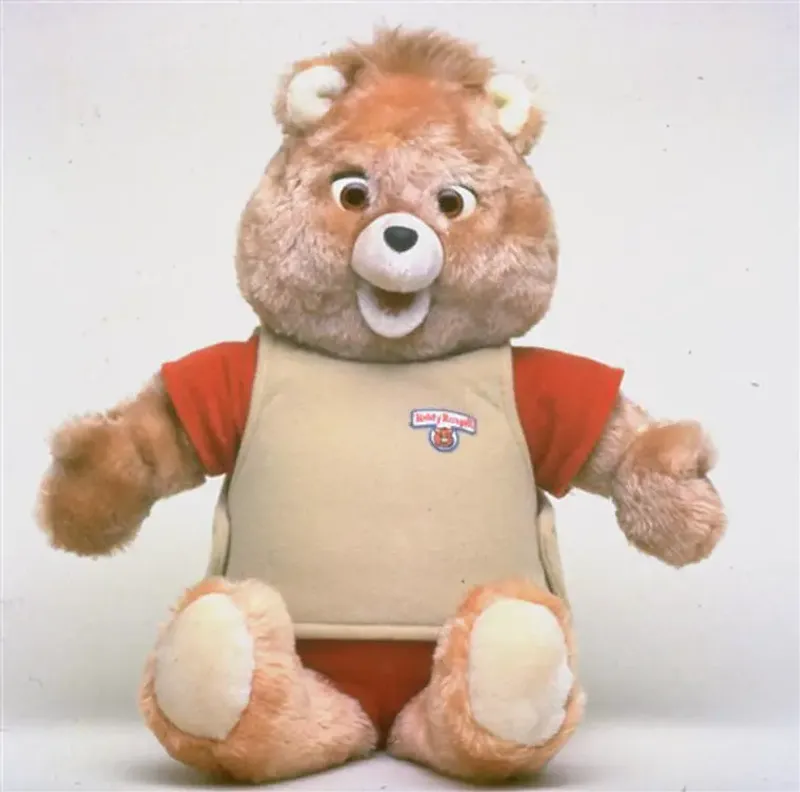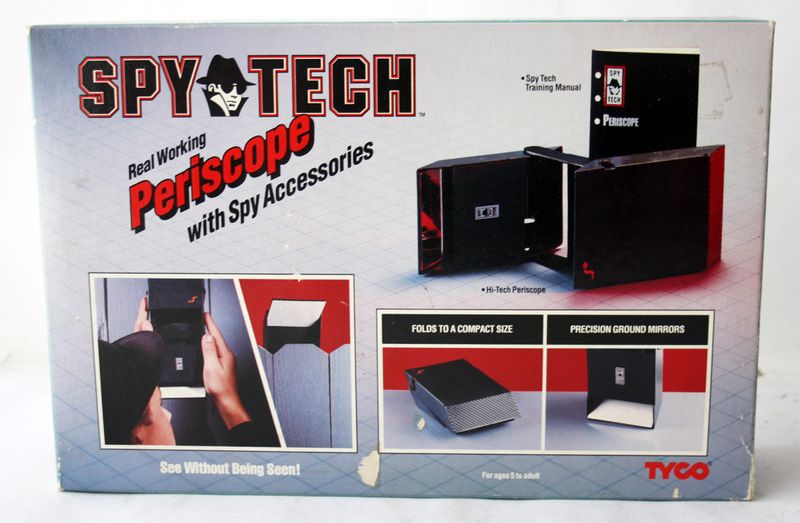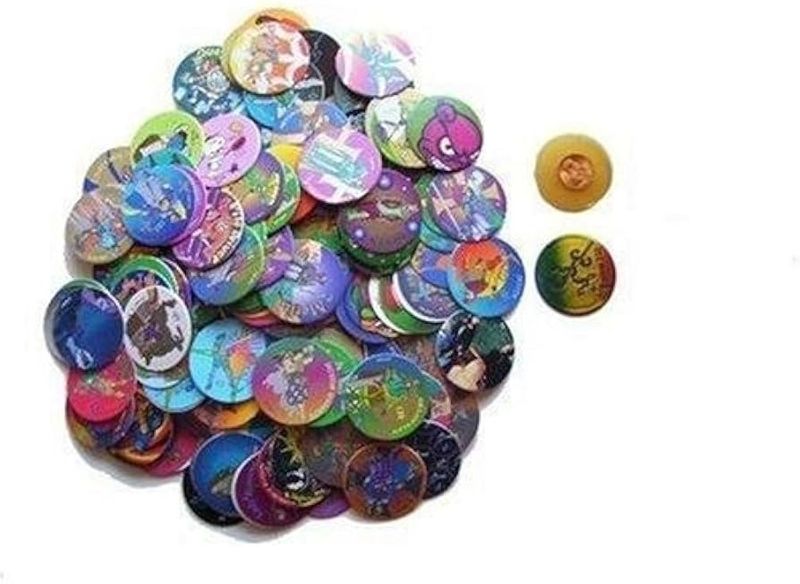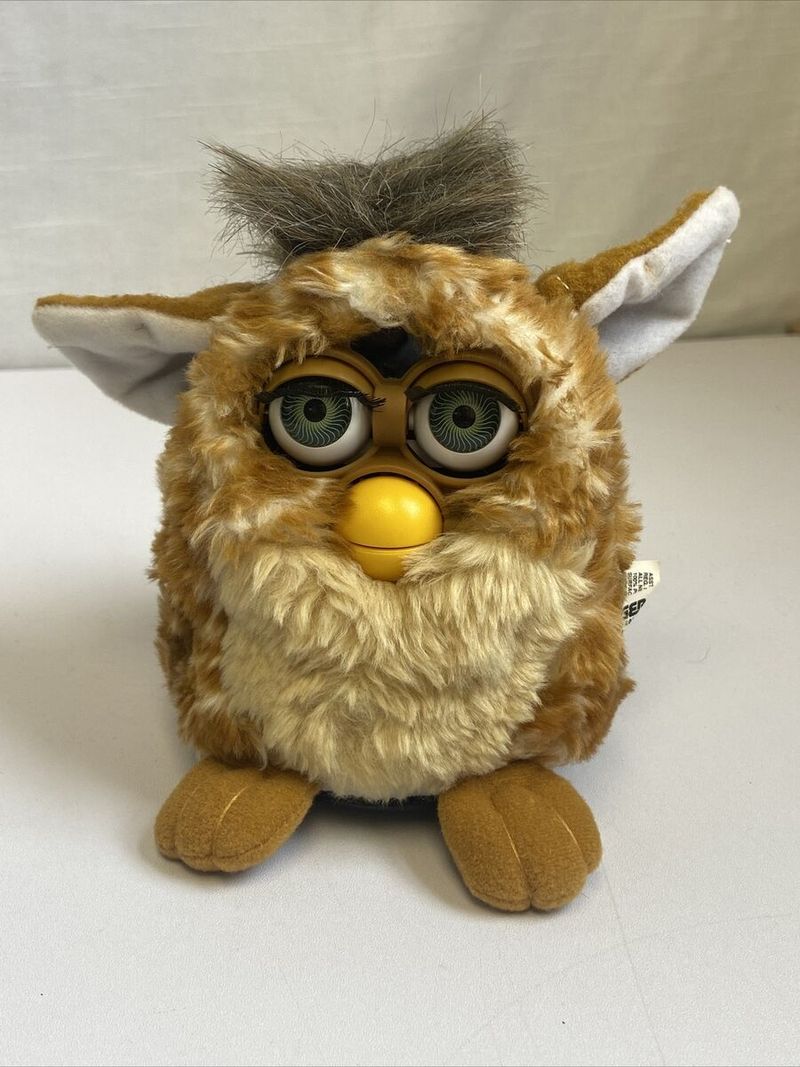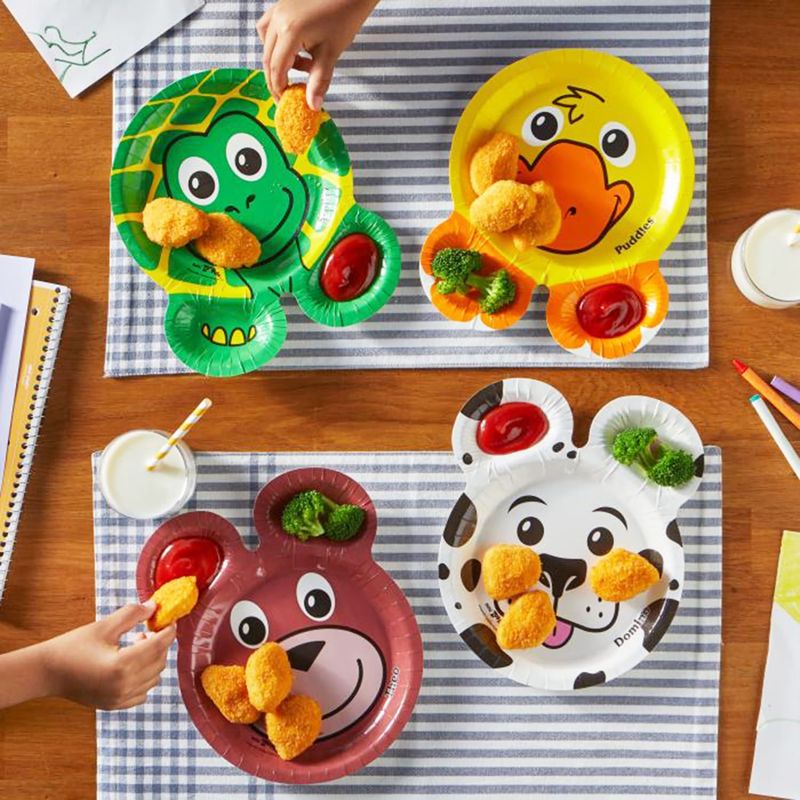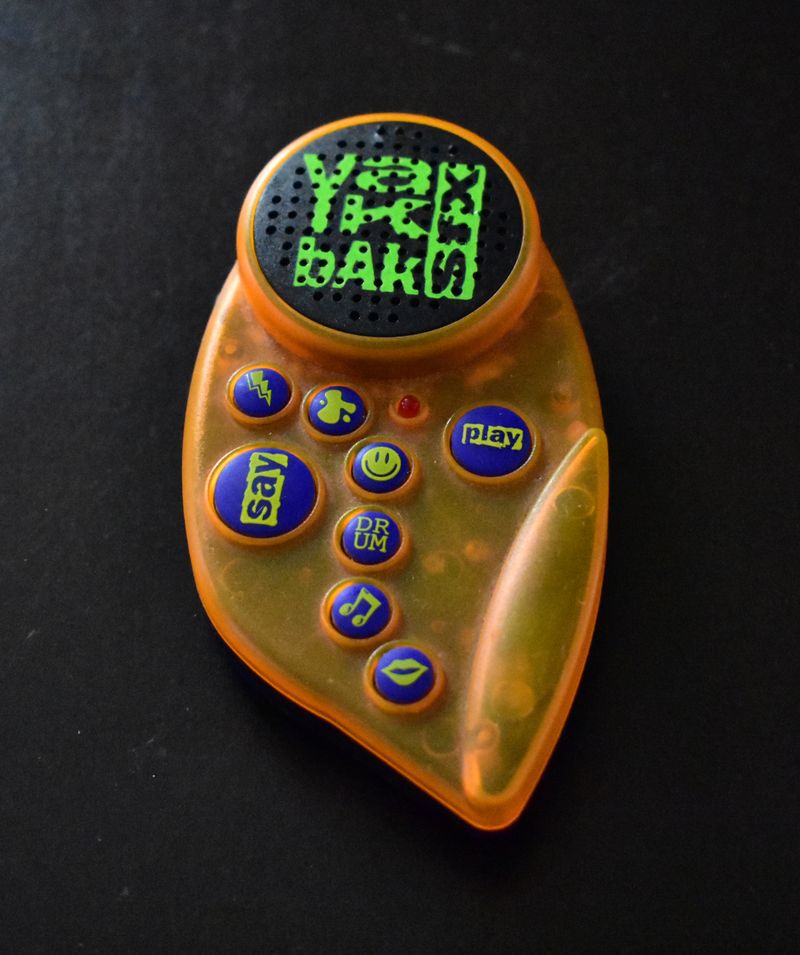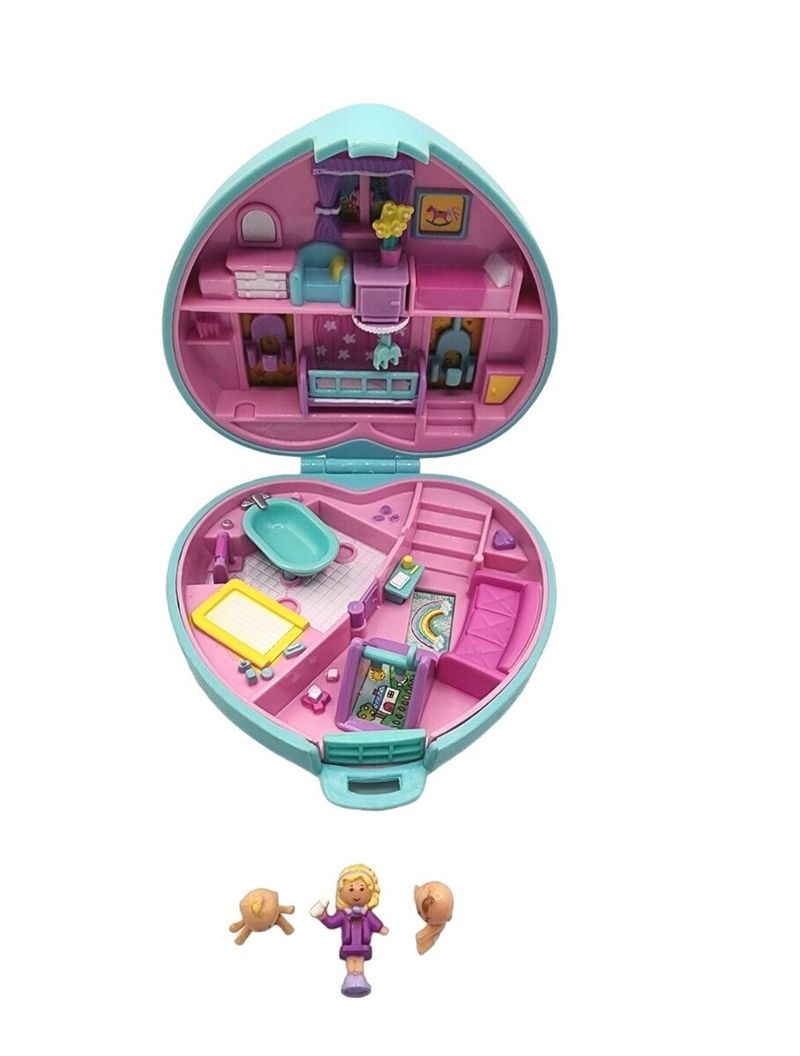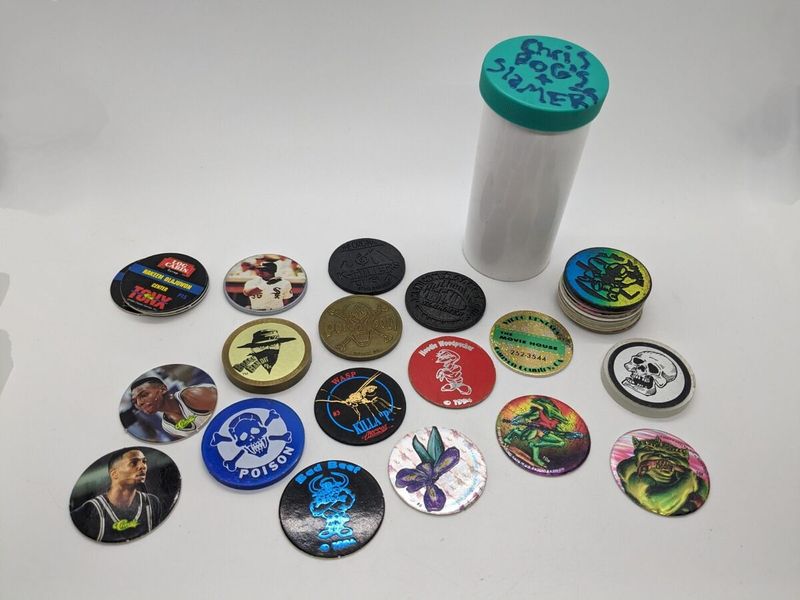The 1990s was a magical era for toys before technology took over our lives. From neon-colored plastic contraptions to bizarre collectibles, these playthings defined our childhoods and playground status. Remember racing home after school to play with these treasures? Let’s revisit those simpler times when happiness came in toy form rather than smartphone notifications.
1. Skip-It
That plastic ankle hoop connected to a weighted ball became a schoolyard status symbol overnight. Kids would swing it around their ankles for hours, trying to beat their highest score on the built-in counter.
The satisfying click with each rotation kept us hooked despite the inevitable ankle bruises and playground collisions. Remember the commercials with impossibly coordinated children performing Skip-It tricks?
The ultimate ’90s flex was owning the upgraded model with lights and digital counter that made the classic version look practically prehistoric.
2. Moon Shoes
“Mini trampolines for your feet” promised moon-like bouncing but delivered ankle-twisting chaos. Strapping these plastic platforms to your shoes with their thick elastic bands gave you dreams of superhuman jumping abilities.
Reality quickly set in when you discovered that balancing on what were essentially two small, unstable trampolines required Olympic-level coordination. Parents feared them, emergency room doctors knew them by name.
Despite the dangers, no playground flex was bigger than showing up with these gravity-defying contraptions strapped to your Sketchers.
3. Creepy Crawlers
Nothing said “I live dangerously” like cooking rubbery bugs on a mini hot plate. This toy perfectly balanced parental concern with childhood delight as we squirted colorful goop into metal molds.
The unmistakable smell of cooking Plastigoop filled bedrooms everywhere. We’d wait impatiently for our creations to cool, then peel them out with the excitement of mad scientists.
Burns were practically a badge of honor among Creepy Crawler enthusiasts. The real pros would combine colors for marbled effects or add glow-in-the-dark elements for maximum creepiness.
4. Talkboy
Kevin McCallister made this cassette recorder the most coveted Christmas gift after Home Alone 2. The magic wasn’t just recording your voice—it was slowing it down to sound like an adult or speeding it up for alien effects.
Siblings became unwilling subjects for our amateur recording sessions. The handheld recorder with its flip-up microphone felt like serious spy equipment in our small hands.
Many parents regretted this purchase after hearing their kids repeatedly say “Hi kids, we’re home early” in slow-motion for the five-hundredth time. The deluxe version even came with a detachable microphone headset!
5. Stretch Armstrong
This muscle-bound action figure filled with corn syrup gel became the ultimate test of childhood strength. How far could you pull his limbs before something terrible happened? The suspense was part of the fun.
Friends would gather around to witness extreme stretching sessions. His flesh-colored rubber skin and vacant expression somehow made the torture even more entertaining.
Eventually, every Stretch Armstrong met the same tragic fate—a pinhole leak that oozed sticky goo, usually on a bedroom carpet. Yet despite his inevitable demise, he remained a childhood hero who literally gave his all for our entertainment.
6. Pogo Ball
Before fidget spinners, we had the Pogo Ball—a Saturn-shaped balancing challenge that left many of us with scraped knees. The concept was simple: stand on the platform, grip with your feet, and bounce your way to neighborhood glory.
Mastering this contraption required core strength we didn’t know we had. The pros could hop down stairs or perform tricks, while beginners struggled to stay upright for more than three bounces.
The distinctive squeaking sound announced your approach long before you arrived. Having one in a neon color combination made you instantly cool, regardless of your actual Pogo Ball skills.
7. Bop It
“Bop it! Twist it! Pull it!” Those commands still echo in the minds of ’90s kids. This handheld game of reflexes turned family road trips and sleepovers into competitive arenas where friendships were tested.
The pressure mounted as the commands came faster and faster. That distinctive voice became both coach and judge as we frantically tried to keep up with its increasingly rapid demands.
Nothing was more satisfying than beating your personal high score, or more devastating than that mocking failure sound. The extreme version added “Flick it” and “Spin it” commands for those seeking an even greater challenge.
8. Super Soaker 50
Before the Super Soaker, water guns were pathetic plastic toys that dribbled disappointment. Then came this pressurized water cannon that changed summer forever.
The ritual of pumping up your weapon created delicious anticipation. The satisfying weight of a fully loaded tank against your shoulder meant serious business was about to go down.
Neighborhood water battles became epic with range and accuracy never before possible. Kids with lesser water guns stood no chance against this technological marvel, creating a clear hierarchy in the backyard water warfare of the ’90s.
9. Tamagotchi
These egg-shaped digital pets turned an entire generation into secret caretakers during school hours. The tiny LCD screen housed a creature entirely dependent on your button-pressing dedication.
Teachers across America confiscated these pocket-sized responsibilities as kids desperately tried to feed, clean, and entertain their virtual dependents. The heartbreak of returning to find your neglected pet had transformed into a tombstone was surprisingly real.
Status was measured by how long you kept yours alive or which rare character you managed to raise. The translucent colored cases became fashion accessories, often dangling from backpacks as badges of digital parenthood.
10. Crazy Bones
Small, colorful, and oddly shaped—these tiny figurines sparked playground trading frenzies that rivaled Wall Street. Each character had a unique face and pose, making certain rare ones worth sacrificing your lunch money for.
Games like “Knockdown” had kids flicking these little guys at targets with surprising intensity. The thrill of adding a coveted character to your collection was unmatched.
Storing them became an art form—special cases, Crown Royal bags, or custom-made containers signaled serious collector status. Parents stepped on them constantly, creating both pain and panic as we checked if our precious Eggy or Speedy had survived the foot encounter.
11. Lite-Brite
Long before digital screens dominated our lives, we created glowing masterpieces by pushing tiny colored pegs into a black grid. The satisfying click of each peg sliding into place was oddly therapeutic.
Completed designs illuminated darkened bedrooms like stained glass windows. Ambitious kids abandoned the template sheets to create original artwork, though this often resulted in chaotic color explosions rather than recognizable images.
Finding missing pegs became a household hazard—especially for barefoot parents. The true Lite-Brite artists were those who could work around burnt-out bulbs, creating designs that strategically avoided the dark zones.
12. Sock’em Boppers
“More fun than a pillow fight!” promised the commercials, and these inflatable boxing gloves delivered on that promise—along with unexpected tears. Siblings finally had parent-approved weapons to settle disputes.
The distinctive squeak of vinyl against vinyl accompanied living room battles across America. Despite their soft appearance, a well-placed Sock’em Bopper to the face could still send you crying to mom.
Inflating them required lung capacity we didn’t know we had. The real pros knew to slightly under-inflate them for that perfect combination of bounce and impact, turning ordinary children into backyard boxers without the concussions.
13. Crossfire
The game itself never quite matched the intensity of its commercial, where two kids battled in what appeared to be a post-apocalyptic thunderdome. The reality was frantically shooting tiny metal balls across a plastic arena.
The ear-splitting sound of those metal balls ricocheting off plastic barriers created a chaotic symphony that drove parents mad. Missing balls became permanent fixtures in household vacuum cleaners across America.
That theme song, though! “CROSSFIRE! You’ll get caught up in the… CROSSFIRE!” burned itself into our collective memory more effectively than the actual gameplay. No ’90s kid can hear the word without mentally screaming the jingle.
14. Mighty Max
While girls had Polly Pocket, boys collected these horror-themed playsets that packed entire adventure worlds into pocket-sized cases. Opening each compact revealed detailed monster lairs with tiny figures ready for battle.
The skull-shaped playsets were particularly coveted, offering gruesome details that fascinated young minds. Parents worried while kids traded these macabre miniatures with increasing enthusiasm.
The accompanying cartoon series added depth to the collecting experience, though most kids were more interested in the gross-out factor than the storylines. Finding a rare playset like Doom Dragon or Skull Dungeon could make you an instant playground celebrity.
15. Gak
Nickelodeon’s contribution to the slime craze came in plastic bubbles and promised hours of stretchy, squishy fun. The weirdly satisfying air-bubble noises (often used to simulate bodily functions) were half the appeal.
Parents hated Gak with good reason—it found its way into carpets, hair, and clothing with magnetic precision. The distinct chemical smell became the unofficial scent of ’90s childhoods.
Color-changing varieties or the glow-in-the-dark version elevated your Gak game to legendary status. Smart kids knew to store it properly in its plastic egg, while the rest of us learned harsh lessons about leaving it out overnight, finding hardened, useless lumps by morning.
16. Mouse Trap
This board game featured the most elaborate and temperamental Rube Goldberg machine ever marketed to children. Setting up the contraption took longer than playing the actual game, which few kids even bothered to learn.
The true joy came from successfully triggering the sequence: boot kicks ball, ball rolls down ramp, hits lever, cage falls! When it worked, the satisfaction was immeasurable.
Most families had incomplete sets with missing crucial pieces, leading to creative substitutions. Marbles replaced balls, LEGO bricks stood in for missing parts, and arguments ensued when the makeshift machine inevitably failed at the critical moment.
17. Koosh Ball
A rubber core sprouting hundreds of rubber filaments created this oddly satisfying sensory experience that became a desk toy phenomenon. The soft, springy tendrils made catching easy for even the most athletically challenged kids.
Teachers confiscated them by the thousands. The distinctive sound of a Koosh hitting a classroom wall always resulted in immediate detention.
They came in neon colors, metallic finishes, and even character versions with googly eyes. The true Koosh connoisseurs knew the perfect balance between the larger, more expensive models and the smaller, denser ones that flew better when thrown.
18. Teddy Ruxpin
This animatronic storytelling bear either enchanted children or gave them lasting nightmares—there was no in-between. His moving mouth and blinking eyes synced to stories played on the cassette player embedded in his back.
Late-night battery failures could produce demonic-sounding narration that sent kids screaming to their parents’ bedroom. The cassettes were expensive, so most kids heard the same three stories on repeat until they could recite them verbatim.
Advanced owners discovered you could insert regular music tapes, creating the surreal experience of a children’s teddy bear lip-syncing to Nirvana or Spice Girls with his jerky mechanical movements.
19. Spy Tech Electronic Periscope
Every child’s espionage fantasies came to life with this plastic surveillance tool. The commercials promised covert operations; the reality was mostly spying on siblings or trying to see around corners during hide-and-seek.
Battery life was tragically short, and the image quality was questionable at best. Still, there was something magical about seeing around corners without being seen.
The deluxe versions came with night vision capabilities (a green-tinted lens) or voice changers for complete secret agent transformation. Parents quickly learned to check their bedroom doorways for periscopes before changing clothes.
20. Pogs
These simple cardboard discs sparked a collecting frenzy that swept playgrounds faster than any school administrator could write a ban notice. Originally milk caps, they transformed into currency, status symbols, and the center of a game of skill and chance.
Slammers—the heavier discs used to flip stacks of Pogs—became prized possessions. Metal ones were coveted, holographic ones were legendary, and banned ones with inappropriate images were secretly traded like contraband.
Schools eventually outlawed them as gambling, but the underground Pog economy thrived. Children who couldn’t remember their multiplication tables somehow managed complex Pog valuation systems with remarkable accuracy.
21. Furbies
These electronic owl-hamster hybrids with their own language were either beloved companions or nightmare fuel. Their ability to “learn” English (actually pre-programmed to gradually introduce English phrases) convinced many kids they were actually intelligent.
Urban legends spread about Furbies recording conversations or speaking in the middle of the night. The fact that removing batteries didn’t stop them from making some movements (due to capacitors discharging) only fueled these fears.
The most disturbing part? Their eyes would slowly close when turned upside down, as if passing out. Many ended up in closets after parents tired of their 3 AM “Dah-ay-loh-oo-tye” declarations.
22. Tech Deck
Miniature skateboards for your fingers turned math class into skate parks across America. These tiny replicas of professional boards featured real graphics from actual skateboard companies, making them collectibles as much as toys.
Skilled players could perform kickflips, grinds, and ollies using just two fingers. Pencil cases became half-pipes, textbooks transformed into ramps, and desk edges served as rails for grinding tricks.
The dedicated Tech Deck enthusiast carried a screwdriver to adjust truck tightness for optimal performance. Classroom floors became graveyards of tiny wheels and axles that had popped off during particularly ambitious finger-skating maneuvers.
23. Zoopals
Mealtime became showtime with these disposable plates featuring animal faces and punny names. The hippo plate wasn’t just a plate—it was “Harry Hippo” with molded sections creating eyes, ears, and a smile.
Parents willingly paid extra for these paper products because they miraculously convinced picky eaters to finish their dinners. Kids would save the best bites for the animal’s mouth section, turning eating into performance art.
Birthday parties weren’t complete without the matching cups and utensils. The commercial jingle (“Zoopals make eating FUN!”) became permanently embedded in millennial brains, triggering instant nostalgia whenever paper plates appear.
24. HitClips
The most impractical music format ever created—tiny plastic cartridges that played approximately one minute of low-quality, mono audio from popular songs. Yet somehow, they became must-have accessories for trend-conscious kids.
The original players couldn’t even use headphones; you had to hold them to your ear like a tiny boombox. Later models included wearable players that clipped to clothing and keychains that played snippets of NSYNC or Britney Spears.
The true absurdity? We paid $3-4 per clip for seconds-long, terrible-quality song fragments. But showing off your collection of these musical postage stamps was essential for maintaining social status in the pre-iPod era.
25. Yak Bak
Before voice memos existed, this small recording device let kids capture brief audio snippets for immediate playback—usually of burps, silly voices, or forbidden words. The single button operation made it accessible even to the tech-challenged.
The true genius was the reverse playback feature that transformed ordinary phrases into alien-sounding gibberish. Hours were spent recording messages that sounded innocent forward but revealed secret meanings when reversed.
Advanced models like the Yak Bakwards added voice-changing effects, creating playground celebrities out of kids who mastered the art of recording the perfect robot voice or monster growl.
26. Polly Pocket
These tiny dollhouses concealed in compact-sized cases created miniature worlds that fit in pockets. Opening the clamshell revealed detailed landscapes with microscopic dolls smaller than your fingernail.
The rubber dolls bent just enough to sit in chairs or ride tiny vehicles but were prone to getting lost in carpet fibers or vacuum cleaners. Serious collectors arranged elaborate multi-case villages connected by imagination.
The original versions were truly minuscule—later safety regulations forced them to grow to choking-hazard-avoiding sizes. True ’90s kids remember the satisfaction of closing a complete Polly world with a snap, knowing an entire universe was tucked safely in your pocket.
27. POGs
POGs were simple cardboard discs with colorful designs, yet they sparked playground economies more complex than Wall Street. The game involved stacking these milk-cap descendants and slamming them with a heavier disc called a slammer.
Schools eventually banned them as gambling when the “winner keeps” version became too popular. Some kids amassed hundreds, storing their collections in special cylindrical containers that became status symbols themselves.
The most valuable POGs featured popular characters, holographic designs, or limited editions. Everyone had that one friend who refused to risk their “lucky” slammer in actual gameplay, preserving it like a sacred artifact.
